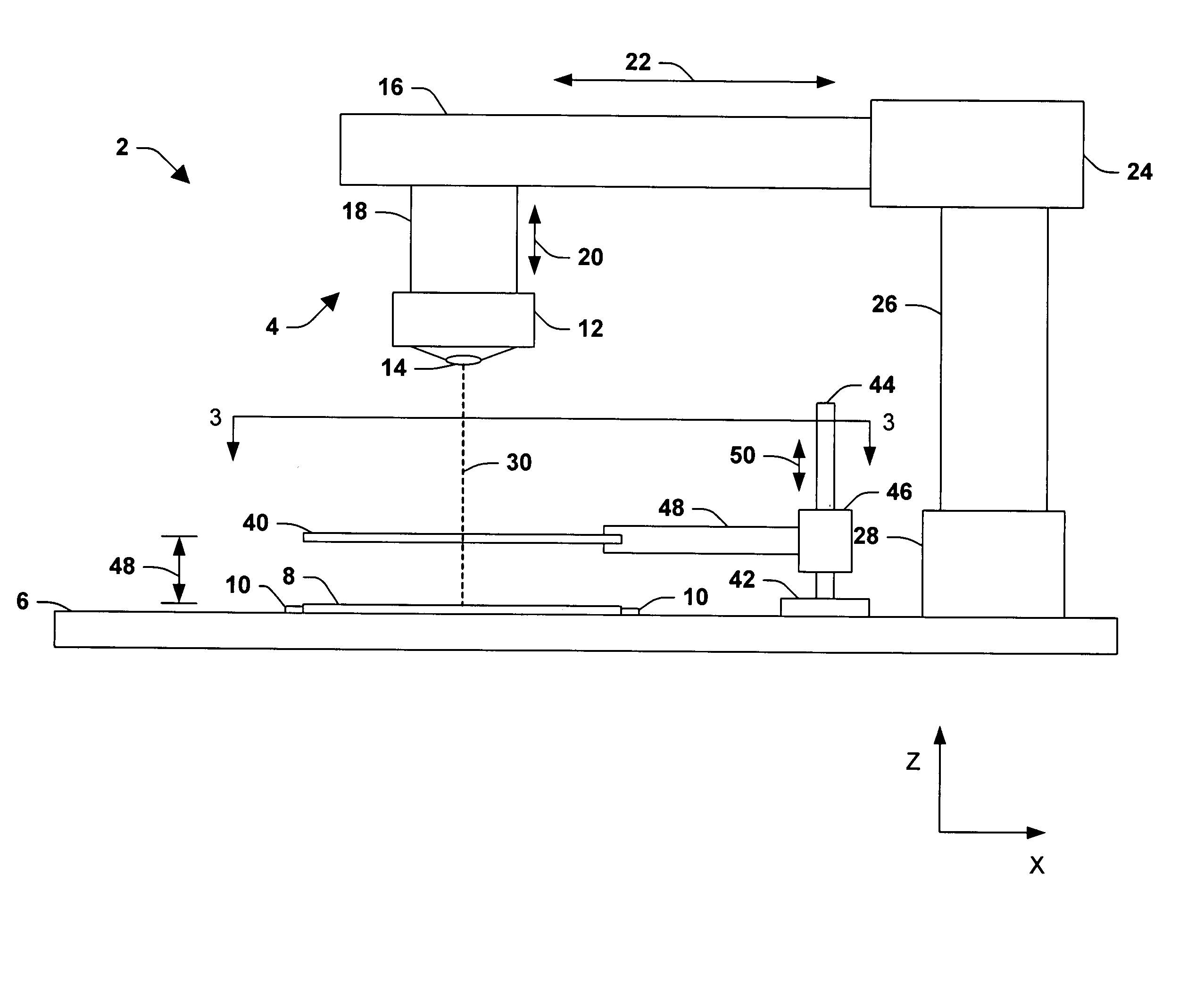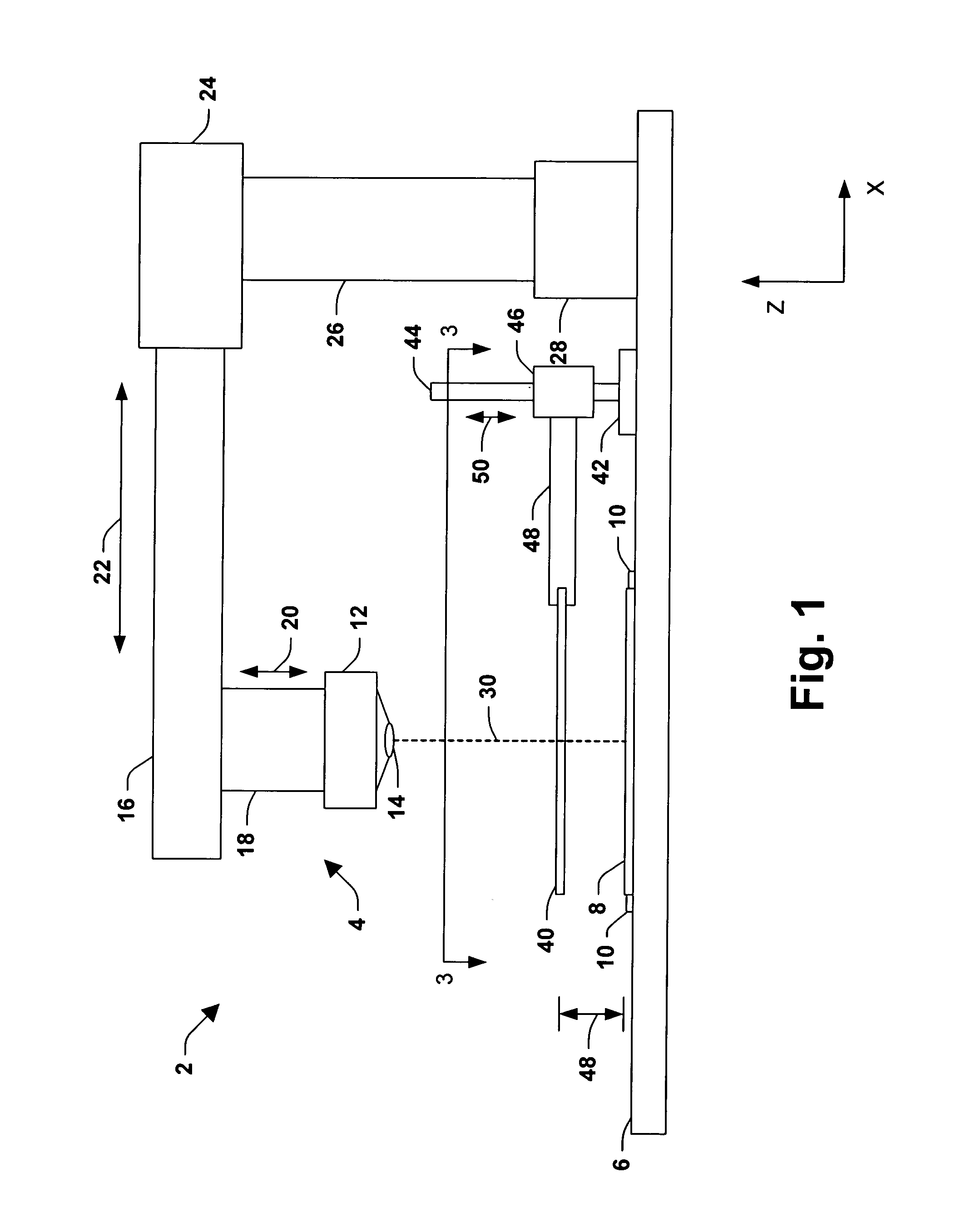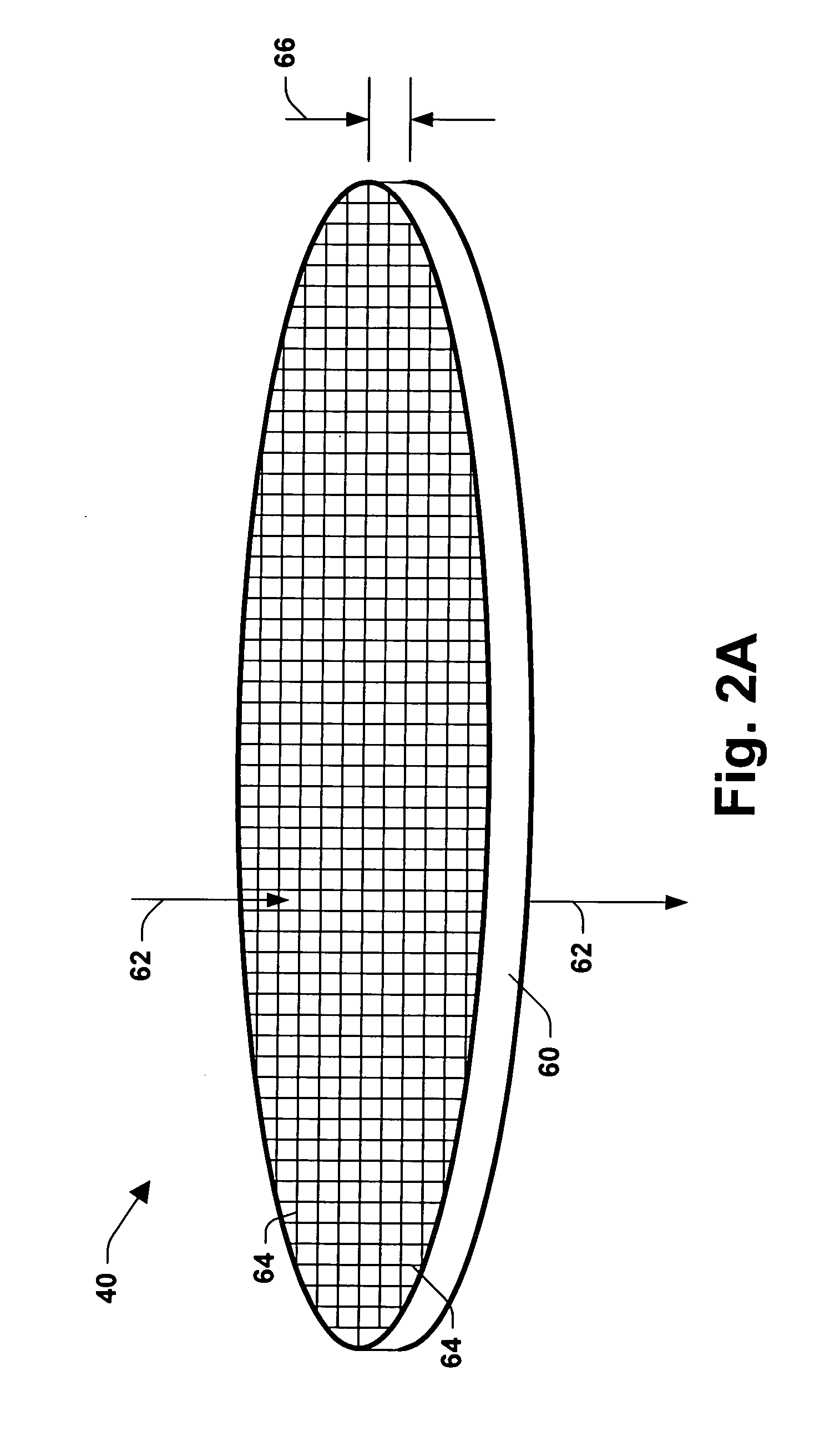System and method for defect identification and location using an optical indicia device
- Summary
- Abstract
- Description
- Claims
- Application Information
AI Technical Summary
Benefits of technology
Problems solved by technology
Method used
Image
Examples
Embodiment Construction
[0030]The following is a detailed description of the present invention made in conjunction with the attached figures, wherein like reference numerals will refer to like elements throughout. The invention provides a system and methods by which workpiece defects and their causes may be identified and located. The invention finds particular application in the field of semiconductor manufacturing. However, it will be recognized that other applications are possible within the scope of the invention. In particular, the various aspects of the invention may be employed to determine which step in a multi-step semiconductor manufacturing process is causing defects in a semiconductor wafer.
[0031]Referring to FIG. 1, an exemplary optical defect inspection system 2 is illustrated having an optical measurement device (e.g., an optical microscope) 4 mounted on a stage 6, and adapted to inspect a workpiece 8 mounted on the stage 6 using retainers 10. The workpiece 8 may include a semiconductor wafe...
PUM
 Login to View More
Login to View More Abstract
Description
Claims
Application Information
 Login to View More
Login to View More - R&D
- Intellectual Property
- Life Sciences
- Materials
- Tech Scout
- Unparalleled Data Quality
- Higher Quality Content
- 60% Fewer Hallucinations
Browse by: Latest US Patents, China's latest patents, Technical Efficacy Thesaurus, Application Domain, Technology Topic, Popular Technical Reports.
© 2025 PatSnap. All rights reserved.Legal|Privacy policy|Modern Slavery Act Transparency Statement|Sitemap|About US| Contact US: help@patsnap.com



